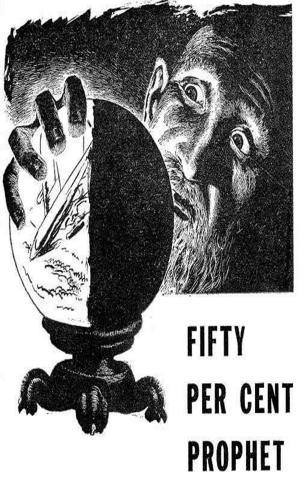Adventures of Captain Hatteras
Mystery & Suspense, Espionage, Fiction & Literature, Action Suspense, Classics| Author: | Jules Verne | ISBN: | 1230000245701 |
| Publisher: | Consumer Oriented Ebooks Publisher | Publication: | June 10, 2014 |
| Imprint: | Language: | English |
| Author: | Jules Verne |
| ISBN: | 1230000245701 |
| Publisher: | Consumer Oriented Ebooks Publisher |
| Publication: | June 10, 2014 |
| Imprint: | |
| Language: | English |
Adventures of Captain Hatteras (French: Voyages et aventures du capitaine Hatteras) is an adventure novel by Jules Verne in two parts: The English at the North Pole (French: Les Anglais au pôle nord) and The desert of ice (French: Le Désert de glace).
The novel, set in 1861, described adventures of British expedition led by Captain John Hatteras to the North Pole. Hatteras is convinced that the sea around the pole is not frozen and his obsession is to reach the place no matter what. Mutiny by the crew results in destruction of their ship but Hatteras, with a few men, continues on the expedition. On the shore of the island of "New America" he discovers the remains of a ship used by the previous expedition from the United States. Doctor Clawbonny recalls in mind the plan of the real Ice palace, constructed completely from ice in Russia in 1740 to build a snow-house, where they should spend a winter. The travellers winter on the island and survive mainly due to the ingenuity of Doctor Clawbonny (who is able to make fire with an ice lens, make bullets from frozen mercury and repel attacks by polar bears with remotely controlled explosions of black powder).
When the winter ends the sea becomes ice-free. The travellers build a boat from the shipwreck and head towards the pole. Here they discover an island, an active volcano, and name it after Hatteras. With difficulty a fjord is found and the group get ashore. After three hours climbing they reach the mouth of the volcano. The exact location of the pole is in the crater and Hatteras jumps into it. As the sequence was originally written, Hatteras perishes in the crater; Verne's editor, Jules Hetzel, suggested or rather required that Verne do a rewrite so that Hatteras survives but is driven insane by the intensity of the experience, and after return to England he is put into an asylum for the insane. Losing his "soul" in the cavern of the North Pole, Hatteras never speaks another word. He spends the remainder of his days walking the streets surrounding the asylum with his faithful dog Duke. While mute and deaf to the world Hatteras' walks are not without a direction. As indicated by the last line "Captain Hatteras forever marches northward".
Adventures of Captain Hatteras (French: Voyages et aventures du capitaine Hatteras) is an adventure novel by Jules Verne in two parts: The English at the North Pole (French: Les Anglais au pôle nord) and The desert of ice (French: Le Désert de glace).
The novel, set in 1861, described adventures of British expedition led by Captain John Hatteras to the North Pole. Hatteras is convinced that the sea around the pole is not frozen and his obsession is to reach the place no matter what. Mutiny by the crew results in destruction of their ship but Hatteras, with a few men, continues on the expedition. On the shore of the island of "New America" he discovers the remains of a ship used by the previous expedition from the United States. Doctor Clawbonny recalls in mind the plan of the real Ice palace, constructed completely from ice in Russia in 1740 to build a snow-house, where they should spend a winter. The travellers winter on the island and survive mainly due to the ingenuity of Doctor Clawbonny (who is able to make fire with an ice lens, make bullets from frozen mercury and repel attacks by polar bears with remotely controlled explosions of black powder).
When the winter ends the sea becomes ice-free. The travellers build a boat from the shipwreck and head towards the pole. Here they discover an island, an active volcano, and name it after Hatteras. With difficulty a fjord is found and the group get ashore. After three hours climbing they reach the mouth of the volcano. The exact location of the pole is in the crater and Hatteras jumps into it. As the sequence was originally written, Hatteras perishes in the crater; Verne's editor, Jules Hetzel, suggested or rather required that Verne do a rewrite so that Hatteras survives but is driven insane by the intensity of the experience, and after return to England he is put into an asylum for the insane. Losing his "soul" in the cavern of the North Pole, Hatteras never speaks another word. He spends the remainder of his days walking the streets surrounding the asylum with his faithful dog Duke. While mute and deaf to the world Hatteras' walks are not without a direction. As indicated by the last line "Captain Hatteras forever marches northward".















